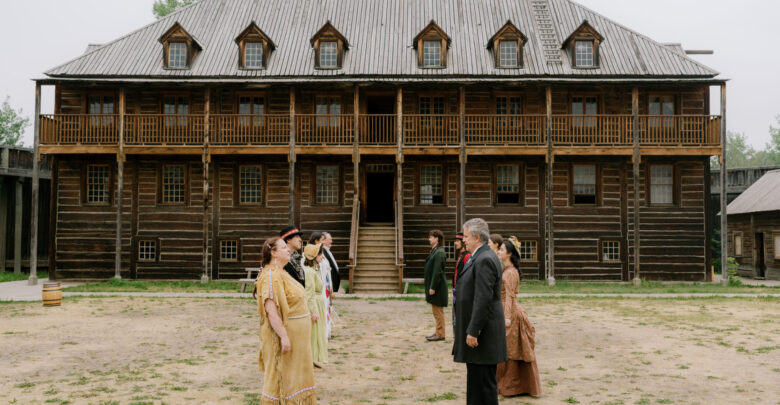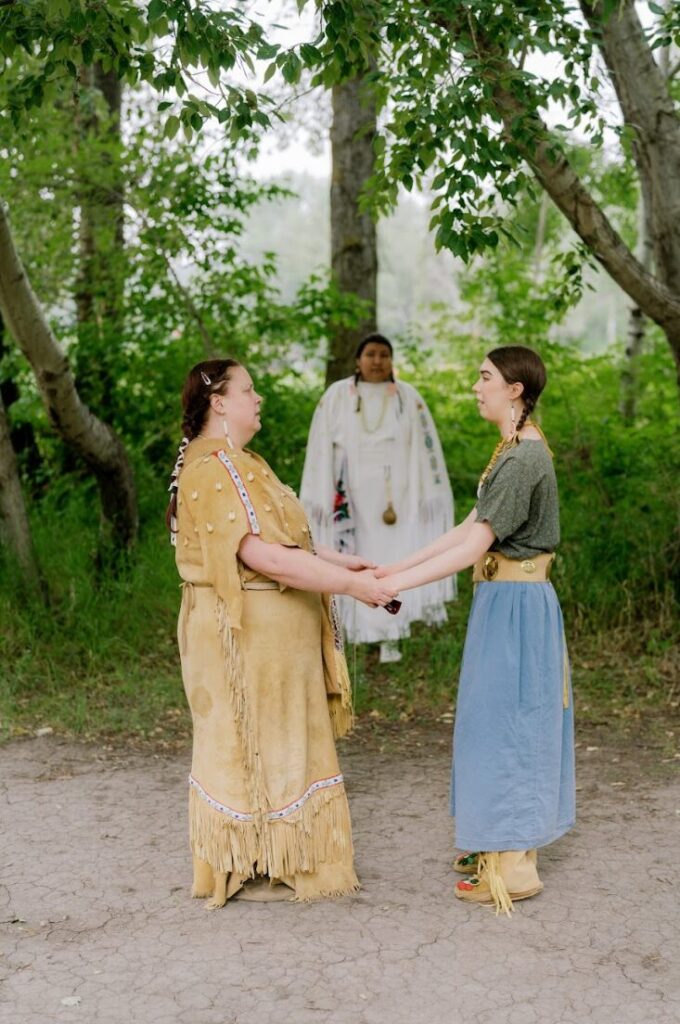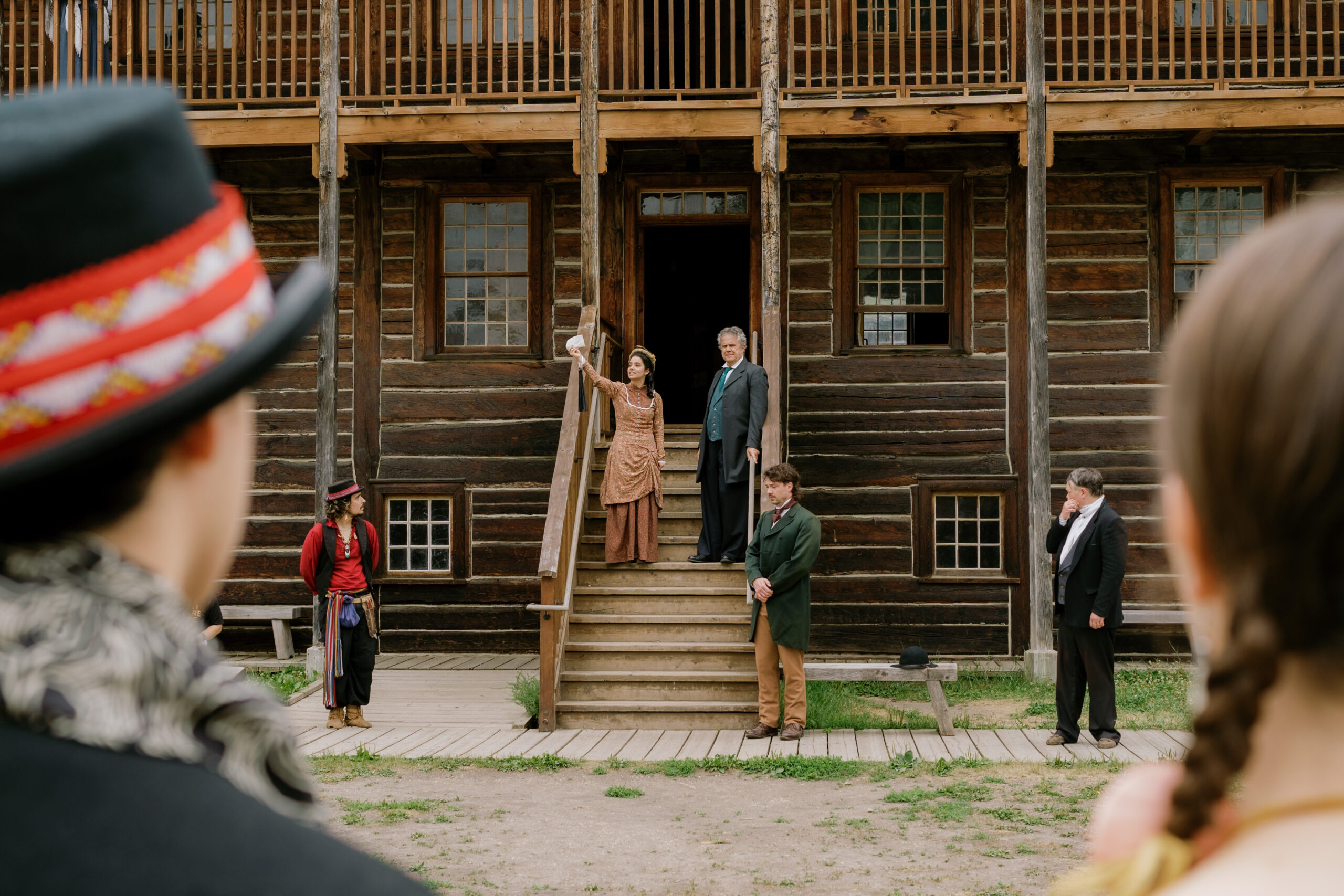Two perspectives on ‘Civil Blood: A Treaty Story’
'Civil Blood: A Treaty Story’ provides participants the unique opportunity to choose which protagonist to follow.
 Mat Simpson Photography
Mat Simpson PhotographyCivil Blood: A Treaty Story, presented by Thou Art Here Theatre, premiered at Fort Edmonton Park on July 26. The play, co-created by Neil Kuefler and Josh Languedoc, has been in the works since 2016. The story is set during the Fur Trade, and the signing of Treaty Six, which occurred in September, 1876. The Canadian government is encroaching into the First Nations’ territories, and hostility is arising. Yet, among these tensions, is the resemblance of a Romeo and Juliet love story. Along with the captivating storyline is a unique participation aspect, where viewers get to choose which protagonist to follow.
Attendees have the choice to follow either Ekah (Emily Berard), the young Nêhiyaw huntress, or Lily (Christina Nguyen), the oblivious, governor’s daughter. While each track was its own unique story, the collaborative nature of the performance was show-stopping as well.
Ekah’s struggle with identity
Viewers who choose to follow Ekah’s story are led to the location for the opening scene — a teepee with benches forming a semi-circle around it. Here we are introduced to the members of the Nêhiyaw village.

Throughout the duration of the performance, Ekah becomes increasingly distressed about the Europeans’ presence. She struggles with the idea of signing the treaty, and becomes scared her and her tribe’s Indigenous roots will deteriorate. Her spirit Takah (Maria Buffalo), however, tempers her feverish anxiety, and at times sympathizes with her. At one point Takah agrees with Ekah through the analogy that “[The Europeans] are the wolves, and we are the wool they shear.” This reinforces Ekah’s feelings of hesitancy regarding the Europeans and the treaty.
Eventually, Ekah talks with her European love interest Julian (Gabriel Richardson), who is the inheritor to Fort Edmonton. She delivers soliloquy-esque dialogue where she expresses her weariness to him. Her thoughts constantly linger on the fate of her people, and that if by loving him, she will lose herself.
At this point the two tracks meet. This time however, tensions are much higher than before. Julian and Ekah approach Julian’s uncle, Father Gabriel (Cody Porter) to inform him of their marriage. The pair are instantly taken aback by Gabriel’s explosive reaction where he slaps Julian across the face, and spits at Ekah. After this display, Ekah is back to her original apprehensions regarding the Europeans. She won’t change her mind, and the result of this quarrel between the two sides affirms that. Her ties to her roots take priority over all else.
— Brooklyn Hollinger
Lily’s naive perspective
The second track follows Lily and is narrated by the ghost of her dead mother, Agatha Sampson (Elena Porter). Her character is isolated and sheltered, and thus, the audience following her track has little insight into the world beyond the walls of Fort Edmonton. As a result, the track focuses heavily on her individual troubles, specifically, her relationship with Julian. Contrastingly, Ekah’s relationship with Julian extends beyond the two individuals. Their conflict represents the greater issues between the two groups. Although it is frustrating to miss the full story, this play does an exceptional job of showcasing Lily’s understanding of the world, in all of its obliviousness.

When Lily bumps into Kahkakis (Colby Stockdale), a young man of both Indigenous and European descent, she is able to extend her worldview beyond herself — temporarily, that is. Lily asserts that the fort provides protection, while Kahkakis argues that the walls are a cage and discusses the issues plaguing his people. Lily even speaks out against her father and tells him that the treaty is a mistake.
This seems too good to be true, and it is. In the final scene, Lily fails to take on any active role, either in support of Father Gabriel or Kahkakis when a fight breaks out between them. The bravery she exhibited when speaking to her father is gone; she simply fades into the background and ends the play as powerless as she was to begin with.
This may seem like an unfortunate and unsatisfying ending, but this play refuses to tell a fairytale retelling of historical events. A simple conversation between Lily and Kahkakis would not be enough to truly change her understanding of the world.
— Sanjeet Sandhu
Audience members understand they only have half the story
By creating two separate tracks, audience members experience historical events through distinct perspectives. The play makes the audience painfully aware of the story, context, and nuances they are missing from the other track. When the two tracks unite, attendees cannot help but wonder what occurred on the other side of the fort walls. Everybody will walk away from this play with a unique understanding of what took place.
Civil Blood: A Treaty Story will be presented at Fort Edmonton Park until August 4.




